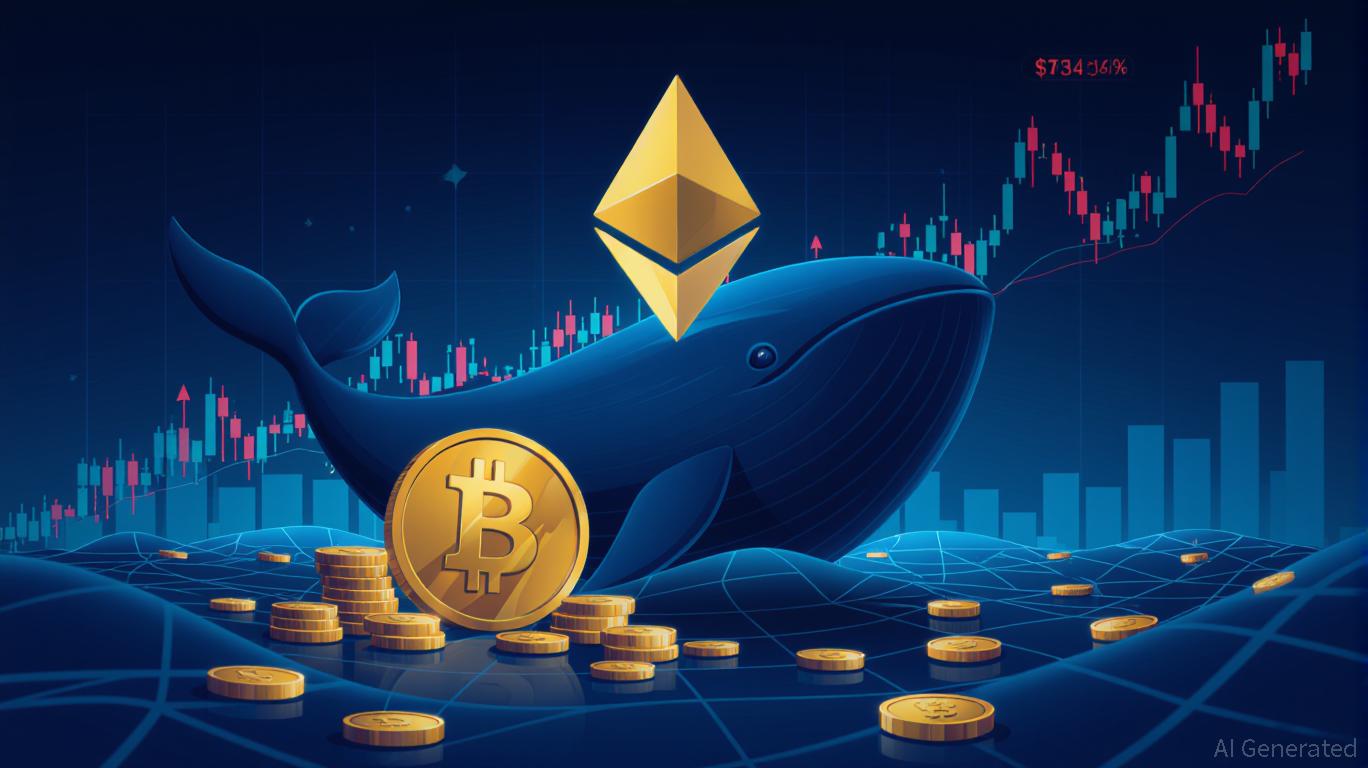Large-Scale Ethereum Whale Transactions: A Double-Edged Sword for Market Sentiment and Volatility
In the dynamic world of cryptocurrency,
(ETH) has long been a barometer for market sentiment. Recent on-chain activity in July 2025 has amplified both optimism and caution, as large-scale whale transactions—spanning hundreds of millions in value—have reshaped the narrative around ETH's price trajectory. While these movements often signal bullish confidence, they also introduce short-term volatility risks that investors must navigate carefully.
The Bullish Case: Whale Accumulation and Strategic Re-Entry
Over the past month, Ethereum has witnessed unprecedented accumulation by institutional and high-net-worth investors. A standout event was the $49.56 million ETH purchase on July 21, 2025, flagged by on-chain analysts as a “strong bullish signal.” This transaction, coupled with a parallel $50 million purchase on the same day, suggests coordinated buying pressure from whales. Such accumulation reduces circulating supply and often precedes price surges, as seen in historical data.
Another compelling development was the re-entry of a dormant Ethereum whale holding 34,033 ETH (worth $129 million). Acquired via FalconX, a platform favored by institutional investors, this transaction underscores confidence in Ethereum's long-term fundamentals. Dormant wallets, particularly those from the Ethereum Genesis era, often stir when market conditions align with strategic goals—whether for liquidity testing or capitalizing on price cycles.
The Volatility Conundrum: Sell-Offs and Short-Term Risks
While accumulation is encouraging, large-scale sell-offs can destabilize even the most bullish market. In July 2025, Whale Alert tracked a $374 million ETH dump—117,678 ETH moved in under four hours—raising alarms about potential liquidity crunches. The largest single transaction, 40,000 ETH ($127 million) dumped on Kraken, could trigger panic selling if interpreted as a bearish signal.
Short-term volatility is further exacerbated by the interplay of whale behavior and technical indicators. Ethereum's price has been consolidating within a Wyckoff accumulation pattern, with a local top at $2,900 and a capitulation phase below $2,100. A breakout above $2,800 could see ETH surge toward $3,500, but a failed attempt might force the price back into a range-bound phase, testing investor resolve.
Institutional Interest and ETF Inflows: A New Paradigm
The bullish narrative is bolstered by institutional participation. BlackRock's ETHA and other U.S.-listed spot Ethereum ETFs have recorded $283 million in inflows over the past week, reflecting growing adoption. Meanwhile, on-chain data shows short positions for ETH reaching new highs, indicating a tug-of-war between bulls and bears.
However, this influx of capital is a double-edged sword. While ETFs inject liquidity, they also attract speculative trading. For instance, a whale that shorted ETH for $9.55 million in July 14 transactions highlights the risks of leveraged positions in a volatile market.
Investment Implications and Risk Mitigation Strategies
For investors, the key is to balance optimism with caution. Here's how to navigate the current landscape:
- Monitor On-Chain Metrics: Track whale movements via tools like Etherscan or Whale Alert. A sudden spike in large sell-offs (e.g., over 10,000 ETH) could signal a bearish shift.
- Dollar-Cost Averaging (DCA): Given the volatility, DCA remains a robust strategy. Allocate smaller, consistent purchases to mitigate risks from short-term price swings.
- Diversify Exposure: Ethereum's dominance in the crypto market doesn't eliminate risks. Pair ETH investments with stablecoins or blue-chip altcoins like (BTC) for hedging.
- Technical Analysis: Focus on key resistance levels ($2,800, $3,500) and support zones ($2,520). A breakout above $2,800 with sustained volume could validate the bullish thesis.
The Road Ahead: Accumulation or Correction?
The coming weeks will test Ethereum's resilience. If whale accumulation continues, ETH could break above $3,500, mirroring Bitcoin's 2024 rally. Conversely, a surge in sell-offs—especially from dormant wallets—might force a pullback to $2,100, triggering panic in the market.
Investors should also watch for regulatory updates, particularly around spot ETFs and institutional staking protocols. These factors could either accelerate Ethereum's adoption or introduce new friction.
Conclusion: A Tenuous Equilibrium
Ethereum's July 2025 whale activity paints a mixed picture. On one hand, accumulation by sophisticated investors signals long-term confidence. On the other, large sell-offs and short-term volatility risks demand vigilance. For now, the market remains in a delicate equilibrium—where every whale transaction could tip the scales. Investors who combine technical analysis with strategic risk management may find themselves well-positioned to capitalize on Ethereum's next phase, whether bullish or bearish.
In the end, the crypto market's mantra—“buy the rumor, sell the news”—remains as relevant as ever. Stay informed, stay cautious, and let data guide your decisions.
Sign up for free to continue reading
By continuing, I agree to the
Market Data Terms of Service and Privacy Statement

Comments
No comments yet